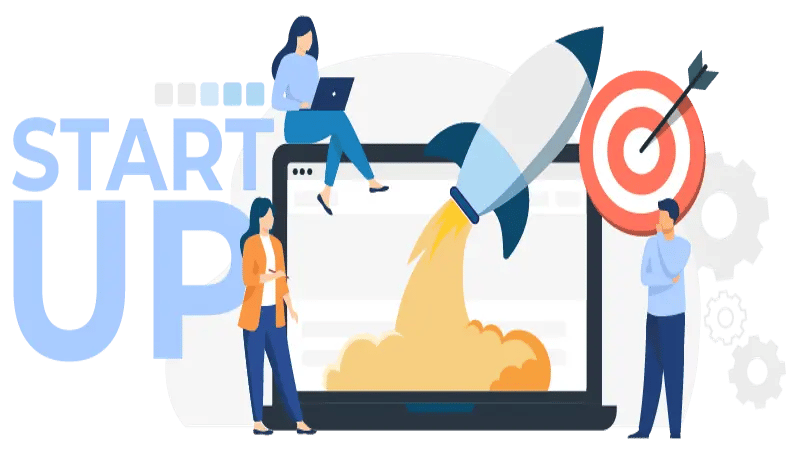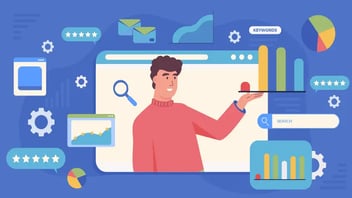How to Transition from Founder-led Sales to Product-led Sales
As a startup grows, sales responsibilities often fall exclusively on the founder's shoulders. This approach brings undeniable value in the early stages, building customer rapport and understanding market needs. However, relying solely on founder-led sales can become a bottleneck for long-term growth. Time constraints limit scalability, dependence on one person creates single points of failure, and inconsistent customer experiences can arise.
Fortunately, a powerful alternative exists: product-led sales (PLS) and product-led growth (PLG)

Product-led sales is a strategy that shifts the focus to empowering the product itself to drive user acquisition and conversion. By optimizing the self-service experience, providing educational content, and leveraging automation, PLG unlocks sustainable growth while freeing up founders to focus on strategic initiatives.
What are Founder-led Sales?
Founder-led sales are distinguished by a personalized touch that stems from the direct involvement of the visionary behind the startup. Founders bring a unique blend of passion, knowledge, and authenticity to the sales process. Their ability to articulate the vision, share the story behind the product, and establish a personal connection with clients creates a powerful narrative. This personal touch fosters trust and builds a foundation for long-term relationships.
Founders wear multiple hats, and one of their critical roles is that of a salesperson. Their deep understanding of the product, combined with the passion that drove them to start the business, allows them to effectively communicate its value proposition. This personal involvement goes beyond selling; it's about sharing a belief in the product and its potential to address the customer's needs.
Founder-led sales are relationship-driven. Beyond the transactional aspect, founders invest time in understanding clients' pain points, tailoring solutions, and ensuring a positive experience. This hands-on approach results in customer satisfaction and generates valuable feedback that can inform product improvements.
While founder-led sales offer a unique set of advantages, they also pose challenges, especially as startups aim for scale and broader market reach.
The Founder-sales Bottleneck
As a startup grows, the founder's time becomes a finite resource. Scaling personalized interactions becomes increasingly challenging, risking a dilution of the personalized touch that characterized early interactions. Balancing growth aspirations with maintaining the essence of founder-led sales requires strategic thinking.
-
Time constraints: Let's face it, there are only 24 hours in a day. As your customer base expands, founder-led sales simply cannot scale. One person can only be in so many places at once, and soon, crucial tasks like product development, fundraising, and team building end up neglected. This bottleneck hampers growth and can even stall momentum.
-
Single point of failure: Relying solely on founder-led sales creates a dangerous dependency. What happens if the founder gets overloaded, falls ill, or decides to move on? The sales engine grinds to a halt, leaving your business vulnerable. Building a diversified sales team with specialized skills mitigates this risk and ensures long-term stability.
-
Inconsistent customer experience: Each founder brings their unique style and approach to sales. This variability, while charming in the early days, can become confusing and frustrating for customers as your business scales. Standardizing the sales process through product-led initiatives ensures a consistent, high-quality experience for every prospect, regardless of who they interact with.
So, does this mean your organization should say goodbye to the founder's involvement in sales altogether? Absolutely not! The knowledge, passion, and customer relationships built during those early days are invaluable assets. Here's the key: shift your focus from being the sole salesperson to becoming the architect of an automated, product-led sales engine.
What is Product-led Sales?
Product-led sales involves a fundamental shift in perspective, placing the product at the forefront of the sales strategy. Rather than relying solely on personal interactions and founder charisma, the emphasis is placed on enabling users to discover, understand, and experience the product's value independently. This approach aligns with the modern customer's desire for self-driven exploration and decision-making.
Central to product-led sales is a deep understanding and effective communication of the product's unique value proposition. This involves clearly articulating how the product addresses user needs, solves pain points, and delivers tangible benefits. The product itself becomes a powerful sales tool, showcasing its features and capabilities to potential customers.
A 2022 report by McKinsey & Company found that companies with strong PLG strategies could achieve a 50% reduction in sales costs compared to those relying solely on traditional sales teams.
Product-led sales are inherently user-centric, putting the customer's journey and experience at the forefront. This approach involves creating intuitive onboarding processes, designing user-friendly interfaces, and ensuring the product itself guides users toward value realization. By prioritizing the user's needs and preferences, startups can establish a strong connection between the product and its intended audience.
The transition to product-led sales brings forth a host of advantages that contribute to the sustainable growth of startups.
-
Scalability and efficiency: By automating the sales process and relying on self-service engagement, PLG reduces dependence on manual sales efforts, allowing your team to focus on strategic initiatives and scale without significant additional resources.
-
Improved user experience (UX): A self-paced, discovery-driven journey leads to a deeper understanding of your product by users, building trust and loyalty. Moreover, PLG reduces overhead costs associated with traditional sales efforts, leading to a more cost-effective customer acquisition strategy.
-
Strategic initiatives: Shifting the focus to PLG allows founders to move beyond the daily grind of sales and devote their time and expertise to higher-level tasks like product development, fundraising, and team building, driving long-term growth and strategic direction.
Transitioning from Founder-led Sales to Product-led Sales
As startups transition from founder-led to product-led sales, a strategic and well-executed plan is crucial. Successfully making this shift requires a thoughtful approach that considers the unique dynamics of the business, the product, and the target audience. Here are key steps to guide startups through this transformative journey:
1. Product Assessment and Optimization
Analyze the product's strengths
Start by conducting a comprehensive assessment of the product. Identify its unique selling points, features, and capabilities that resonate with the target audience. Understanding what sets the product apart lays the foundation for effectively communicating its value in a product-led sales strategy.
Identify user pain points.
Gain insights into the pain points and challenges users currently face. This involves analyzing user feedback, conducting surveys, and leveraging analytics to pinpoint areas where the product can offer significant value. Addressing these pain points becomes a focal point in the product-led sales approach.
2. Implement Customer-centric Strategies
Build intuitive onboarding processes.
Streamline the onboarding experience to ensure users can quickly and effortlessly understand how to use the product. An intuitive onboarding process reduces friction and encourages users to explore the product independently. Incorporate tutorials, tooltips, and user-friendly interfaces to guide users seamlessly.
Use freemium models for user engagement.
Introduce freemium or trial versions of the product to allow users to experience its value before committing to a purchase. This approach reduces the entry barrier and encourages users to engage with the product on their own terms. Freemium models can be a powerful entry point, paving the way for upsells and conversions.
3. Empower Your Sales Team
Train for a product-centric approach.
Equip the sales team with the necessary skills to transition from a founder-centric to a product-centric sales strategy. Training should focus on understanding the product's value proposition, effectively communicating features, and fostering a customer-centric mindset. This ensures that the sales team becomes adept at leveraging the product itself in the sales process.
Align sales goals with product success.
Shift the focus of sales goals from solely revenue-driven metrics to those aligned with product success. Metrics such as user adoption, customer satisfaction, and product engagement become critical indicators of sales success in a product-led model. This alignment ensures that the sales team contributes directly to the product's growth and customer satisfaction.
4. Streamline Processes
Simplify your user interface.
Design should be intuitive, not intimidating. Keep your interface clean, consistent, and user-friendly. Prioritize clarity and functionality to ensure users can navigate your product without needing a GPS.
Leverage automation.
Take repetitive tasks off your plate and let technology handle them. Automate email sequences to nurture leads, provide contextual help through chatbots, and personalize user experiences based on their actions. Remember, automation is your fuel-efficient co-pilot, freeing you to focus on strategic navigation.
5. Content Marketing
Blog posts, articles, and ebooks
Address user pain points, showcase industry trends, and highlight your product's unique value proposition. Optimize your content for search engines to ensure potential customers find you when searching for solutions. Provide in-depth insights and research-backed data to establish your credibility and attract qualified leads interested in a deeper understanding of your product's capabilities.
Webinars and live sessions
Offer interactive sessions where you can delve deeper into specific product features, answer audience questions, and demonstrate your expertise.
6. Engage Your Audience
Email sequences
Implement automated email sequences that nurture leads through different stages of their journey. Offer helpful tips, showcase product updates, and gently re-engage hesitant users. Personalize these sequences based on user behavior and interests for maximum impact.
Live chat and support
Offer readily available support through live chat or chatbot features. Promptly address user concerns and answer questions to ensure a smooth experience and keep them moving forward in their journey.
7. Metrics and Data Analysis
Sign-up rates
-
-
Monitor how many users enter your funnel to gauge your lead generation efforts.
-
Activation rates
-
-
Track how many users are engaging with your product after signing up. This reveals if your onboarding process is effective.
-
Trial conversions
-
-
Measure the percentage of users who convert from a free trial to paying customers. This indicates the effectiveness of your product.
-
The steps outlined provide a roadmap for startups to navigate this transition successfully. By conducting a thorough product assessment, implementing customer-centric strategies, and empowering the sales team, startups can position themselves for growth and scalability.
Looking ahead, the future of product-led sales holds exciting possibilities. Technological advancements, an unwavering commitment to user-centricity, and data-driven decision-making define the landscape. As startups adapt to changing market dynamics and integrate customer success into their strategies, they secure immediate success and establish a foundation for sustained growth and innovation.
This content is also available in:
- German: Wie geht's? Der Wechsel vom Gründer- zum Produkt-geführten Vertrieb.
- Spanish: De ventas por el fundador a ventas por el producto: ¿cómo hacerlo?
- French: Transitionner de la vente par le fondateur à la vente par le produit.
- Italian: Da vendite fondatore a vendite guidate dal prodotto
- Romanian: Tranziție: vânzări conduse de fondatori la vânzări conduse de produs
- Chinese: 如何从创始人主导型销售过渡到产品主导型销售

Joachim is a certified HubSpot trainer with over 13 years of experience in content marketing, strategy, website development, and SEO. He has implemented numerous large-scale, international growth marketing programs, including one with UiPath, which grew from a startup to a successful IPO on the NYSE. Joachim has special expertise in multilingual marketing and sales enablement projects, and he uses the latest AI technologies to help our clients.








Leave a Comment